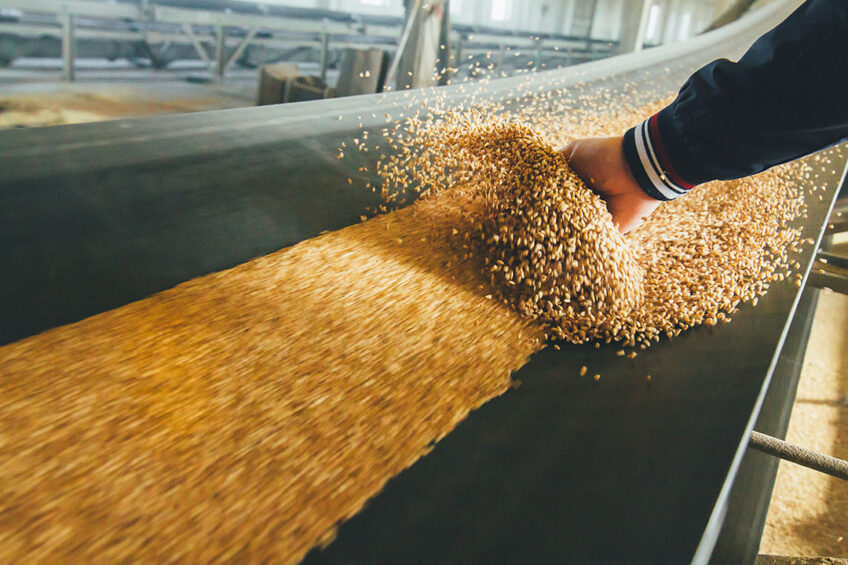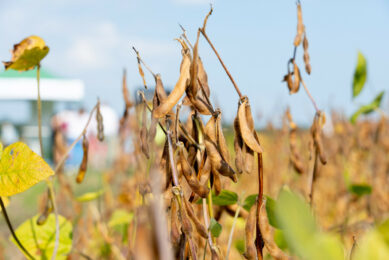Mastering microbials and mycotoxins

Safe food begins with safe feed. Maintaining high quality and nutritional value throughout the feed chain is vital to supporting optimal animal performance and preventing risks to human health. Controlling microbials and mycotoxins are 2 key focus areas to take feed safety to a higher level.
Feed safety demands an integrated approach that considers the entire food production chain. Growth circumstances of crops in the field, feed processing at the mill, biosecurity measures during feed transport, and safe storage and use of the feed on the farm all contribute to feed safety. When feed gets contaminated with yeasts, moulds, mycotoxins, heavy metals and / or bacteria, such as Salmonella and E. coli along the way, it can have serious effects for animal health, performance, food quality and farm profitability. As feed safety is key along several steps in the feed/food production chain, it is pivotal to use the right analysis methods, laboratory services and technical services and solutions. Some of them are explained here.
Know what’s in the feed
Feed safety can only be guaranteed when we have accurate information on what is in the feed (or not). Do we have the right amount of nutrients and trace elements, and can we detect certain elements that should not be in there that cause feed safety issues? Maarten Scholtes-Timmerman, Manager Analytical Innovations at Trouw Nutrition’s MasterLab explains: “At MasterLab, we perform a wide range of analyses in the entire feed chain. We have state-of-the-art equipment to perform a wide range of analyses. We use ICP-MS analysis to detect all kinds of elements (such as trace elements) in feed ingredients and premixes for example. It allows us to measure a wide range of micronutrients such as zinc, magnesium, and calcium for quality control of premixes amongst others. We also use such technologies to check the presence of some unwanted elements, such as heavy metals. A great development that MasterLab is working on right now is to get relevant data on feed available on the spot: where the data matters most. This is done for example by designing smart hand-held devices, such as the NutriOpt On-site Adviser, that enable the use of MasterLab knowledge without the need to send every sample to the physical lab. At MasterLab, we are dedicated to bring the lab to the sample.”
Mitigating mycotoxin risk
Feed safety is also very much linked with mycotoxin risk control. Swamy Haladi, Global Programme Manager Mycotoxin risk management at Trouw Nutrition explains: “Mitigating mycotoxins is a key topic along the feed production chain, from raw material procurement to home-mixing at farm level. Testing of mycotoxins in raw materials and finished feed has become more important, as these toxins pose a serious risk to animal health, milk quality and overall animal performance. At the same time, climate change poses an additional challenge for mycotoxin control. More extreme weather patterns influence the formation of mycotoxins and their distribution. This can lead to new mixtures of certain mycotoxins or new (emerging) mycotoxins.” Having accurate data on contamination levels can be used to monitor trends of raw materials per region and to adjust purchasing decisions of raw materials and feed by farmers and feed mills (better risk assessment). This is where Mycomaster plays an important role. This on-site rapid analysis reader gives a reliable indication of mycotoxin contamination in both raw materials and complete feeds. It measures the presence of the 6 main mycotoxins: Aflatoxin, Zearalenone, Deoxynivalenol, Fumonisin, Ochratoxin and T-2/HT2. When the mycotoxins are measured, the NutriOpt Mycotoxin Adviser provides real-time and customised advice on how to respond to mycotoxin levels in raw materials and in complete feeds. “These analysis tools support informed decisions on accepting or rejecting raw materials and are part of an integrated mycotoxin risk management, including the Toxo product range and inclusion rates,” Haladi explains.
Mitigating pathogen risk
It is also very important to prevent contamination of feed ingredients or finished feed with pathogens. Salmonella for example can be easily introduced into the feed by contaminated ingredients, sub-optimal processing, and sub-hygienic transport, storage, distribution, and administration. It is thus of utmost importance that products are tested for presence, type, and number of bacteria. Mitigating pathogen risk should be done as early as harvest time, during transportation or later in the value chain, upon receipt and storage. Applying specific potent blends of buffered and non-buffered organic acids can help prevent harmful microorganisms (such as Salmonella and E. coli) from metabolising valuable nutrients. “Managing microbes is also key when feeding silage, liquid feed or by-products from the food and beverage industry. Liquid feeding practices are common at some pig farms and by-products are increasingly used in all kinds of animal diets because of their nutritional value, price, and increased availability. Using synergistic blends of organic acids and surfactants helps to reduce yeasts, moulds and Enterobacteria, while preserving nutritional value,” explains Evelien van Donselaar, Global Programme Manager Feed Safety at Trouw Nutrition. Salmonella can be introduced and spread not only through feed but also through drinking water. Acidification with organic acids reduces the pH of the drinking water and supports water hygiene in the presence or absence of chlorine.
Integrated feed safety approach
Ensuring high-quality feed materials and maintaining the nutritional value of feedstuffs requires more than a single solution. Applying a product to the silage or finished feed may positively impact feed quality in the short term but does not offer a long-term solution to maintain quality throughout the entire feed-to-food chain. Trouw Nutrition focuses on an integrated approach and uses its MasterLab expertise and services, dedicated programmes on feed safety and mycotoxin risk management to ensure safe and high-quality feed along the whole production chain. Implementing an integrated approach ensures early warnings are detected and corrective measures can be introduced in a timely manner. Furthermore, it allows for evaluation of the actions taken to prevent re-occurrence of the negative impacts. Offering this total package of services and using a comprehensive and effective combination of detection methods, customised advice and recommendations, products to prohibit micro-organisms’ growth, as well as applying high-quality mycotoxin binders, has proven to be a valuable solution for many feed producers and farms around the globe.







